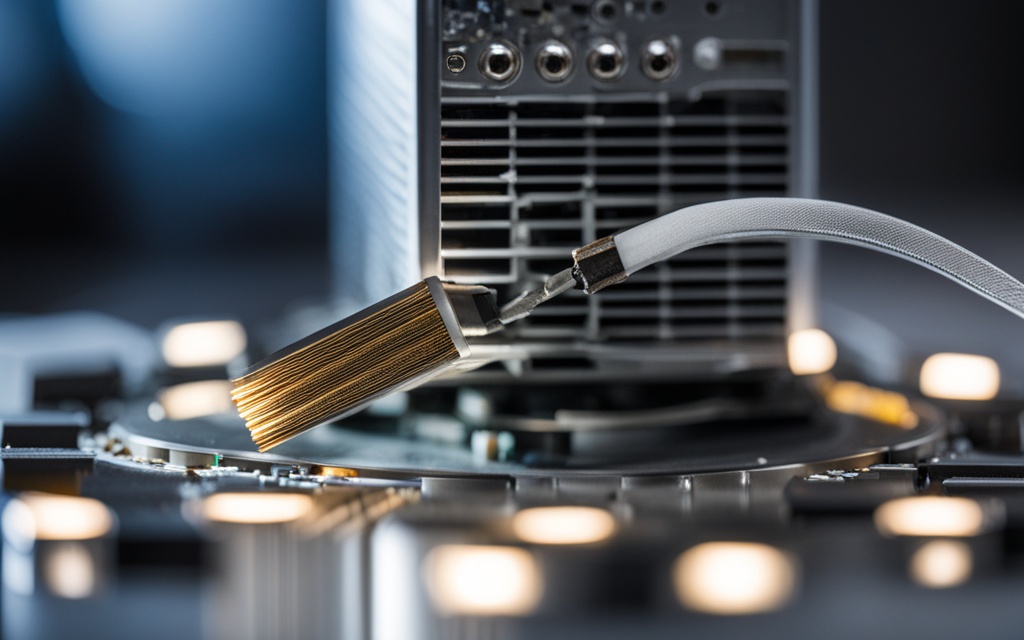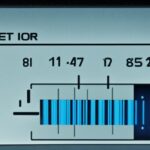Table of Contents
Nowadays, factory resetting a hard disk drive (HHD) is key for keeping it working well and safe. This step completely deletes all data, giving a clean slate that boosts the system’s efficiency. A reset is needed for many reasons, like when wanting to boost the system’s speed, securely remove data before selling or giving away the device, or to get rid of tough malware. Users must realize they will lose data and should back up important things like pictures, documents, and games before they start. It’s also key to understand that a factory reset might not remove all data traces from the drive1.
To understand more about available HDD reset techniques, see this detailed guide.
Key Takeaways
- A factory reset HDD permanently removes all existing data.
- System performance can improve significantly post-reset.
- Backing up important files is essential prior to executing a reset.
- Consider security options to prevent data recovery during resets.
- Advanced users may opt for third-party software to enhance the reset process.
Understanding the Need to Factory Reset an HDD
Factory resetting an HDD is a big choice, driven by various reasons. People often do this to fix performance problems. This makes their system run smoother. Also, getting a used computer means you might want to start fresh by deleting old data.
Keeping hard drive data safe is crucial before selling or giving away devices. This prevents others from accessing your personal info. Sometimes, what seems like malware might actually be hardware issues. So, a full reset might be needed to remove any potential threats. It’s key to know why you’re resetting your HDD to do it right.
Reasons for Resetting
- Improvement of system performance by removing clutter and unwanted files.
- Fresh start desired when obtaining a second-hand computer.
- Ensuring hard drive security before selling or recycling by securely wiping personal data.
- Addressing suspected hardware issues misidentified as malware.
Choosing the right reset option for an HDD is important. You might reset it to full storage, empty and unallocated space, or its original state. Understanding these choices helps prepare for data deletion.
Before resetting, it’s critical to back up important files to avoid data loss.
| Reset Type | Description |
|---|---|
| Full Storage Reset | Restoring the drive to its original capacity by formatting it through Disk Management. |
| Empty & Unallocated Reset | Clearing data for repartitioning or repurposing the drive. |
| Original State Reset | Erasing all data to prepare for resale or recycling while ensuring hard drive security. |
The goal for resetting an HDD should be clear to do it effectively. Knowing why helps pick the right method. This ensures goals are met well without losing security or performance2.
How to Factory Reset a HDD
Factory resetting a hard disk drive can make it work like new and keep your data safe. You can use Windows settings for a deep reset or Disk Management for a quick one. Each option has its own benefits, depending on what you need and how the HDD is used in your computer.
Using Windows Settings
To reset your HDD using Windows, go to Settings > Update & Security > Recovery. Choose “Remove everything” to delete all files. This is important if you’re selling or giving away your device. For extra security, select “Clean data” to prevent others from recovering your files3. This way is best for those who want to fully clear their hard drive before giving it to someone else.
Using Disk Management Tools
If you’re after a fast solution, Disk Management is a good choice for resetting a secondary HDD. Simply right-click the drive and hit Format to wipe it. This is great for drives without the operating system, as it lowers the risk of messing up your system files4. However, always think about the effects of erasing your data and how well it’s really gone.
Alternate Methods for HDD Resetting
People often look for ways to reset their hard drives other than what their operating systems offer. Exploring alternative methods can make the reset process more secure and efficient. This is especially true for those who want to protect sensitive data or completely clean their devices.
Utilising Third-Party Software
There is a range of third-party software that offers extra features for HDD resets. Programs like GParted, EaseUS, and Disk Wipe provide tools for a secure erase. Many users use these tools to wipe their hard drives for privacy before selling or donating their devices. Thus, picking trustworthy tools to prevent data recovery by others5 is crucial.
Many users also reset their drives to remove potential malware. Today’s software options aim to securely delete all data traces. This ensures that sensitive information is safe. Third-party tools also make HDD resets simpler than hardware methods5.
Hardware Options for Advanced Users
For more technical users, hardware methods are available for HDD resets. Using strong magnets to demagnetise drives can effectively erase data. However, this approach is generally recommended for those with the necessary experience due to the risk of damaging the drive5. p>
Some manufacturers offer utilities to help users reset their HDDs without leaving data behind. For instance, Samsung Magic is made for Samsung SSDs and includes secure erase features for comprehensive resets. Technology advancements have made these hardware options easier to use, ensuring safety before disposal6.
Precautions Before Factory Resetting
Before you reset your device, know the importance of data backup. It’s crucial to back up all vital files like documents, photos, and software. This prevents loss of important data. The reset will clear everything from the hard disk. So, it’s key to protect key information first. If you’re not sure how to start, guidance on erasing a computer’s hard drive is vital. It ensures your data safety.
Importance of Data Backup
A good backup means you can get your important files back easily after a wipe. Knowing what data is essential helps make recovery simpler after a reset.
Diagnosing Potential Issues
It’s also key to diagnose hard drive issues before resetting. Check for signs of bad components or malware first. Wrong diagnostics can lead to unnecessary resets. Identify the real problems to decide if a reset is needed or if you need expert help. This decision is critical to ensure the reset fixes the right problems. Learn more about doing a reset right at PC Site78.
FAQ
What is a factory reset for an HDD?
A factory reset for a hard disk drive (HDD) means you erase all data. This lets you start over, boost the HDD’s performance, and keep your personal info safe. It’s very useful before selling or giving away your device.
Why should I factory reset my HDD?
Doing a factory reset on your HDD can make your system run smoother. It helps by getting rid of files you don’t need, securely removing sensitive information, or fixing problems wrongly thought to be malware. This ensures your HDD works its best.
How do I factory reset my HDD using Windows settings?
To factory reset your HDD in Windows, go to “Settings > Update & Security > Recovery”. Here, choose “Remove everything” to delete all files. Make sure to select “Clean data” for extra protection against data recovery efforts.
Can I reset a secondary HDD without affecting the operating system?
Yes, resetting a secondary HDD is possible without harming your operating system. Use the Disk Management tools and right-click on the drive you want to reset. Then select “Format.” This removes all the data but keeps the operating system safe.
Are there third-party tools to wipe my HDD securely?
Absolutely! There are reliable third-party tools like GParted, EaseUS, and Disk Wipe. These are made to securely erase and manage your HDD. With these tools, you can make the resetting process both easier and safer.
What precautions should I take before factory resetting my HDD?
First, make sure to back up important files such as photos, documents, and software to avoid losing them. Also, check your HDD for any problems. This is to make sure a factory reset is really what you need and not a fix for hardware issues.
Source Links
- https://www.wikihow.com/Reset-a-Hard-Drive-on-PC-or-Mac – How to Wipe a Hard Drive of a PC or Mac
- https://www.easeus.com/partition-master/reset-hard-drive.html – How Do I Reset Hard Drive on My Own? Here Is the Complete Guide
- https://www.partitionwizard.com/disk-recovery/remove-files-and-clean-the-drive.html – Reset Windows 10: Remove Files and Clean the Drive – MiniTool Partition Wizard
- https://www.dell.com/support/kbdoc/en-us/000134730/how-do-i-erase-data-from-my-hard-drive – How Do I Erase Data from My Hard Drive
- https://www.malwarebytes.com/cybersecurity/computer/how-to-wipe-a-hard-drive – How to Wipe a Hard Drive | Malwarebytes
- https://serverfault.com/questions/56280/fastest-surest-way-to-erase-a-hard-drive – Fastest, surest way to erase a hard drive?
- https://www.carlcare.in/in/tips-detail/how-to-factory-reset-a-laptop/ – Considering Factory Reset of Your laptop? Here’s all You Should Know
- https://www.businessinsider.com/guides/tech/how-to-wipe-computer – How to wipe a computer if you want to sell it or give it a fresh start








